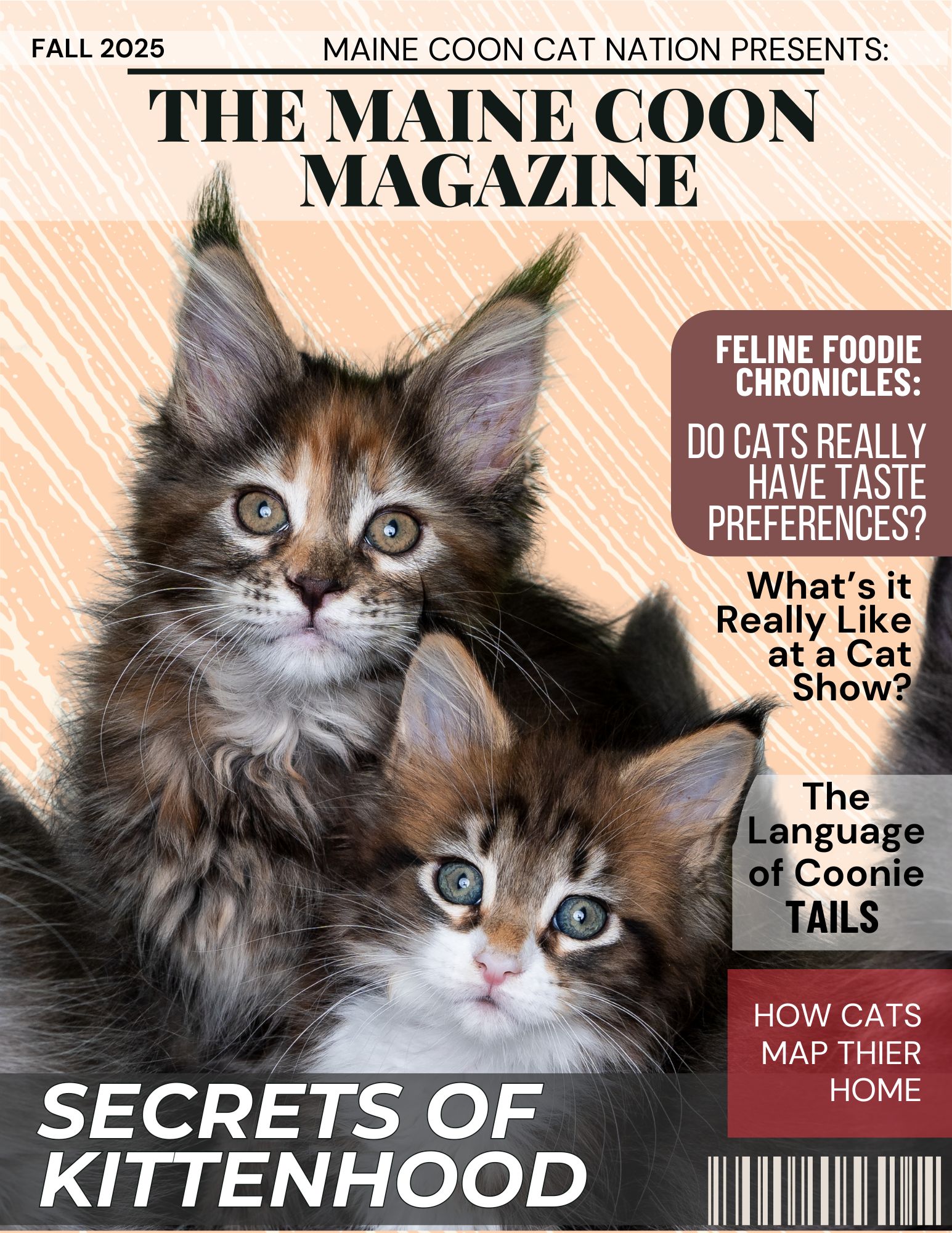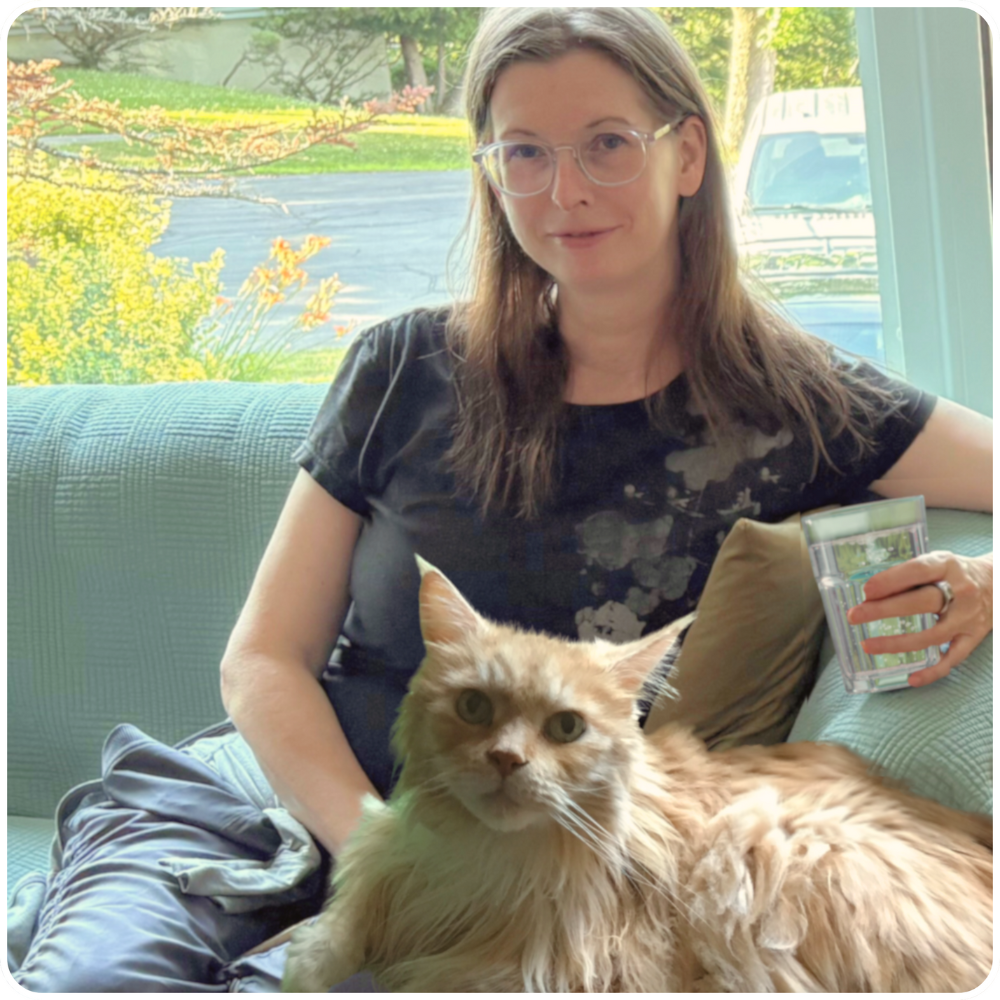- Home
- Maine Coon Care
- What Does Catnip Do?
Disclosure: this site is reader-supported. When you buy through links on our site, we may earn a small commission, at no extra cost to you.
What Does Catnip do to Cats?
What does catnip do to cats, exactly? As we all know, cats love it.
It makes them crazy, silly balls of entertainment. But how? Where does it come from, and how is it "made?"
If you like this, you'll love our fun, free Daily Digest!

If you like this, you'll love our fun, free Daily Digest!

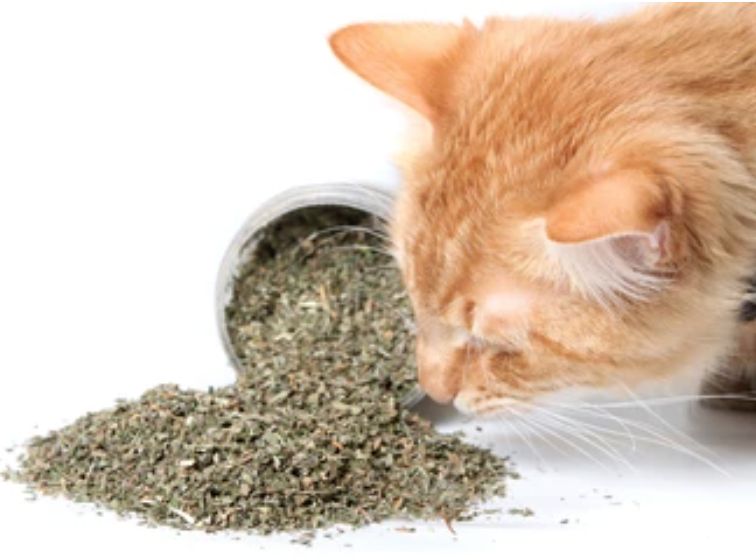
Have you ever thought about growing catnip? Or are you looking for the best catnip cat toy? This page is all about catnip and cats!
As most of us know, it's a plant. Cats love it both in its natural form (growing outdoors or in a pot) and they love when it's been cut and dried, because it's more potent in this state, much like any dried spice or herb.
This is the type that's been stuffed inside a toy.
So what's so special about it, and how does it differ from other plants?
The plant is also known as catswort or catmint. But most of us just call it catnip! Its scientific name is Nepeta cataria. It is in the plant family known as Lamiaceae.
All About Catnip And Cats
When you watch your cat go bananas for catnip it might make you wonder why. What makes your cat have this reaction?
The catnip plant contains a chemical called nepetalactone. This is what the cat reacts to. It stimulates them much like a pheromone.
Kim, Tarzan's mom, says that he: "loves catnip and rolls around in it while purring and stoned out of his skull." Fun!
What Does Catnip Do? - It's in The Oil
Catnip oil is the nepetalactone, taken from the plant, using steam distillation. The oil only slightly affects people. It has been used medicinally for its mild sedative or antibacterial properties.
Research has shown that this oil repels cockroaches, and that it repels mosquitoes ten times better than DEET!
Don't go rubbing catnip oil on yourself just yet, though. It loses its effectiveness when on the skin.
How to Grow Catnip
Do you want to grow your own? It's easy! You can get it from a gardening store. Or, there are even pre-seeded pots you can get.
You can grow it on a windowsill just like any herb. Just try to keep the cat from devouring it all at once!
Here are some tips for growing this particular plant indoors:
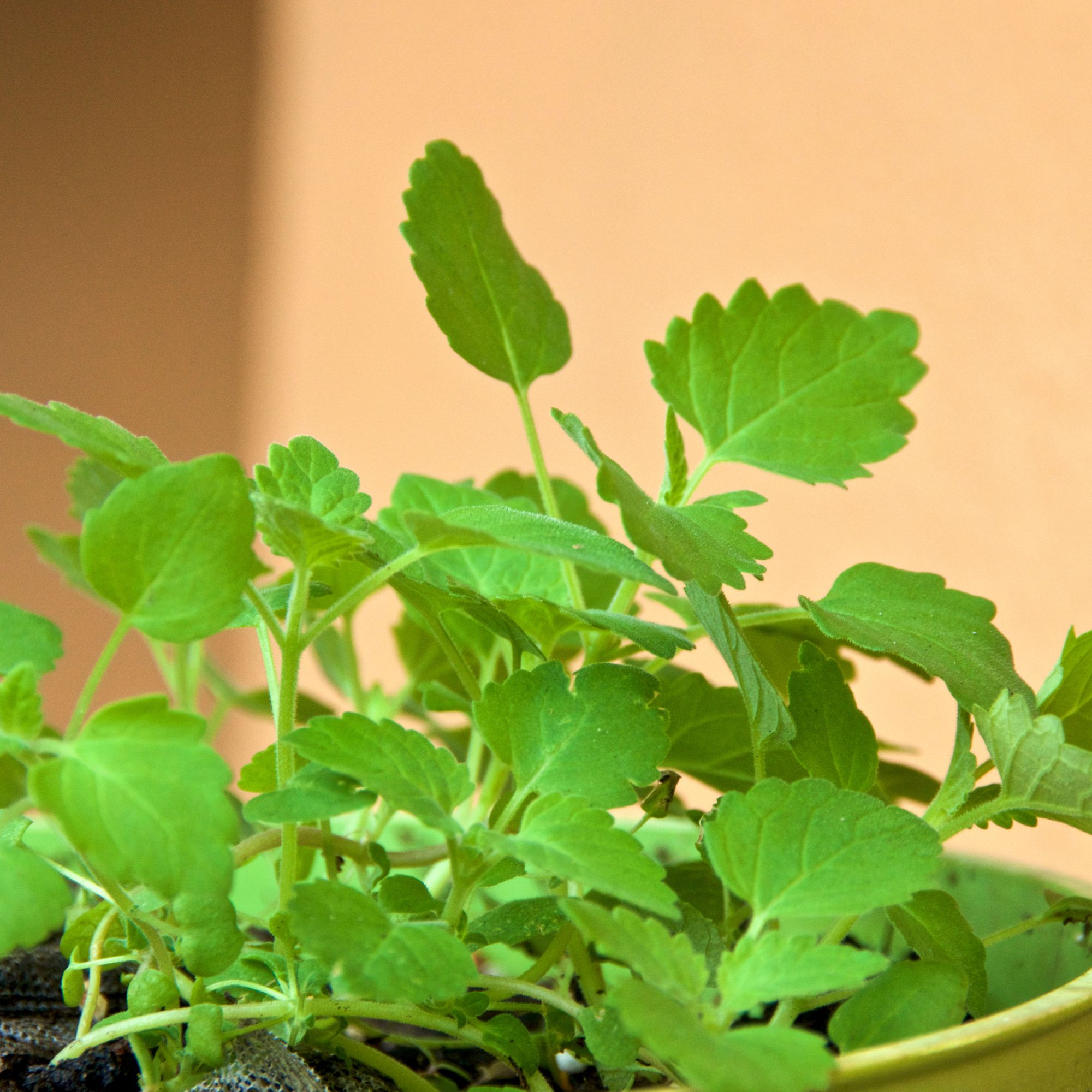
Sunlight: This plant requires ample sunlight to thrive. Ensure your indoor plant receives at least 6 hours of direct sunlight per day.
If natural light is insufficient, you may need to supplement with a grow light to provide adequate light intensity.
Space: Plants can grow quite bushy and may benefit from occasional pruning to maintain shape and encourage new growth.
Make sure the pot is large enough to accommodate the plant's growth and allow for proper air circulation around the foliage.
Watering: While it prefers consistently moist soil, overwatering can lead to root rot and other issues.
Water the plant when the top inch of soil feels dry to the touch, and make sure the pot has drainage holes to prevent waterlogging.
Temperature: The plants prefer moderate temperatures between 65°F to 75°F (18°C to 24°C). Avoid placing the plant near drafts or heat sources, as extreme temperatures can stress the plant.
Cat Accessibility: If you're growing catnip for your feline friend, consider its accessibility.
Some cats may be tempted to nibble on the plant, so you may need to place it in a location where your cat can safely interact with it. Alternatively, you can hang the plant in a hanging basket to keep it out of reach.
Pests: Indoor catnip plants are susceptible to common indoor plant pests like aphids, spider mites, and whiteflies.
Regularly inspect the plant for signs of pest infestation, such as yellowing leaves or webbing, and treat promptly with insecticidal soap or neem oil if necessary.
By addressing these special considerations, you can ensure that your indoor potted catnip plant thrives and provides enjoyment for both you and your feline companion.
Cat Grass vs Catnip:
These are two different plants that serve different purposes for cats:
Catnip (Nepeta cataria):
- Catnip is a member of the mint family and contains a compound called nepetalactone, which produces a euphoric response in many cats.
- What does catnip do to cats? When they encounter it, they may exhibit behaviors such as rubbing, rolling, meowing, and increased activity. These reactions are temporary and typically last for about 10-15 minutes.
- It is often used as a recreational herb for cats and can be dried and sprinkled on toys or scratching posts, or grown fresh for cats to interact with.
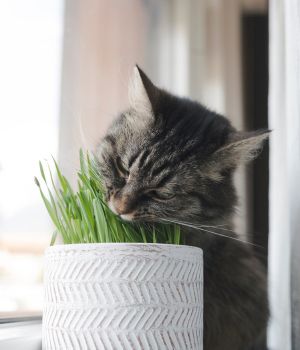
Cat Grass:
- Cat grass refers to various types of grasses, such as wheatgrass, oatgrass, or barley grass, that are safe for cats to nibble on.
- Unlike catnip, cat grass does not contain any psychoactive compounds. Instead, it provides cats with a source of fiber and aids in digestion.
- Cats may instinctively eat grass to help induce vomiting and expel hairballs or other indigestible material from their stomachs. Eating grass can also provide essential nutrients, such as folic acid and chlorophyll, that may be lacking in a cat's diet.
- Cat grass is typically grown indoors in pots or trays and can be offered to cats as a healthy snack or dietary supplement.
So, the difference between them is that catnip elicits a temporary euphoric response in cats due to its nepetalactone content, while cat grass serves as a safe and beneficial dietary supplement that aids in digestion and provides essential nutrients.
Catnip Cat Toys
A catnip-filled cat toy is the gold standard - at least according to cats!
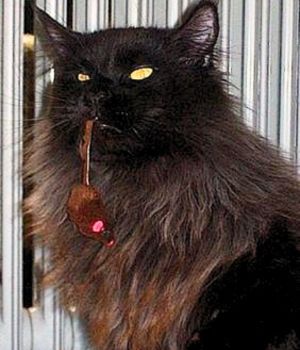
They don't care where catnip comes from, they just know they love it!
Not all cats have the same reaction, and not all are affected by it. But I've never seen a cat unaffected by it!
Nowadays, you can find catnip-filled toys of all shapes and sizes such as little bags, mice, balls, and so much more.
A lot of toys have a pouch that you can refill with fresh catnip from time to time, so the enjoyment never wears out!
Top Catnip Toys Among Our Readers:
- Yeowww! Catnip Toy, Yellow Banana
- SmartyKat Catnip Mice, 3/pkg, Gray, Beige
- SmartyKat Catnip Fish Friends (Set of 3), with Crinkle & Feathers
There are various popular toys available on the market, each offering unique benefits for kitties. Some popular toys include:
- Mice: These are small plush mice stuffed with catnip. They often have tails and are designed for cats to bat around, pounce on, and carry in their mouths.
- Balls: These are small balls made of fabric or rubber filled with catnip. They may have bells or other attachments to stimulate play.
- Kickers: These are long, soft toys filled with catnip. They are typically shaped like tubes or cylinders and are perfect for cats to grab onto and kick with their hind legs.
- Socks: These are fabric socks filled with catnip. Cats can chew, toss, and wrestle with them, providing both mental and physical stimulation.
- Sprays: Catnip sprays contain concentrated catnip oil that can be sprayed on toys, scratching posts, or bedding to renew their appeal to cats.
The benefits of these types of toys include:
- Mental Stimulation: Catnip toys engage cats' natural instincts to hunt, chase, and play, providing mental stimulation and preventing boredom.
- Physical Exercise: Playing with these toys encourages physical activity, helping cats to stay active and maintain a healthy weight.
- Stress Relief: The scent of catnip can have a calming effect on cats, reducing stress and anxiety.
- Bonding: Playing with these types of toys can strengthen the bond between cats and their owners, as it provides an opportunity for interactive play and shared enjoyment.
These kinds of toys are a fun and beneficial way to enrich a cat's environment and promote their physical and mental well-being.
DIY Catnip Spray for Extra Playtime Fun:
Looking for a quick, easy way to give your cat's toys and scratching posts a little refresh?
Homemade catnip spray is a simple solution that you can whip up at home in no time, and it's bound to get your kitty excited for playtime!
Here's how to make it:
- Grab Some Dried Catnip: You can use dried catnip from the store or grow your own. Take a small handful (about a tablespoon) and soak it in a cup of warm water.
- Let It Steep: Allow the catnip to steep for about 15 minutes, so the natural oils and aroma can release into the water.
- Strain the Liquid: After steeping, strain out the dried leaves and pour the liquid into a spray bottle.
- Spritz Away!: Use the spray on your cat's favorite toys, scratching posts, or even their bed to give them an enticing, fresh burst of catnip scent.
This super-easy homemade spray is a great alternative to store-bought versions, and the best part is, you know exactly what’s in it!
It's an easy, natural way to encourage your cat to re-engage with toys they might have lost interest in or get them excited to use their scratching posts again.
Give it a try and watch your cat's playful side come to life!
So what does catnip do? It provides pure enjoyment for cats! It's a safe, natural, and a fun way for them to release some energy. Cats and their 'nip are a perfect pair.
Of course, it's really amusing for us to watch a usually dignified cat turn back into a silly kitten!
Top of What Does Catnip Do?
« Back to Maine Coon Cat Care
